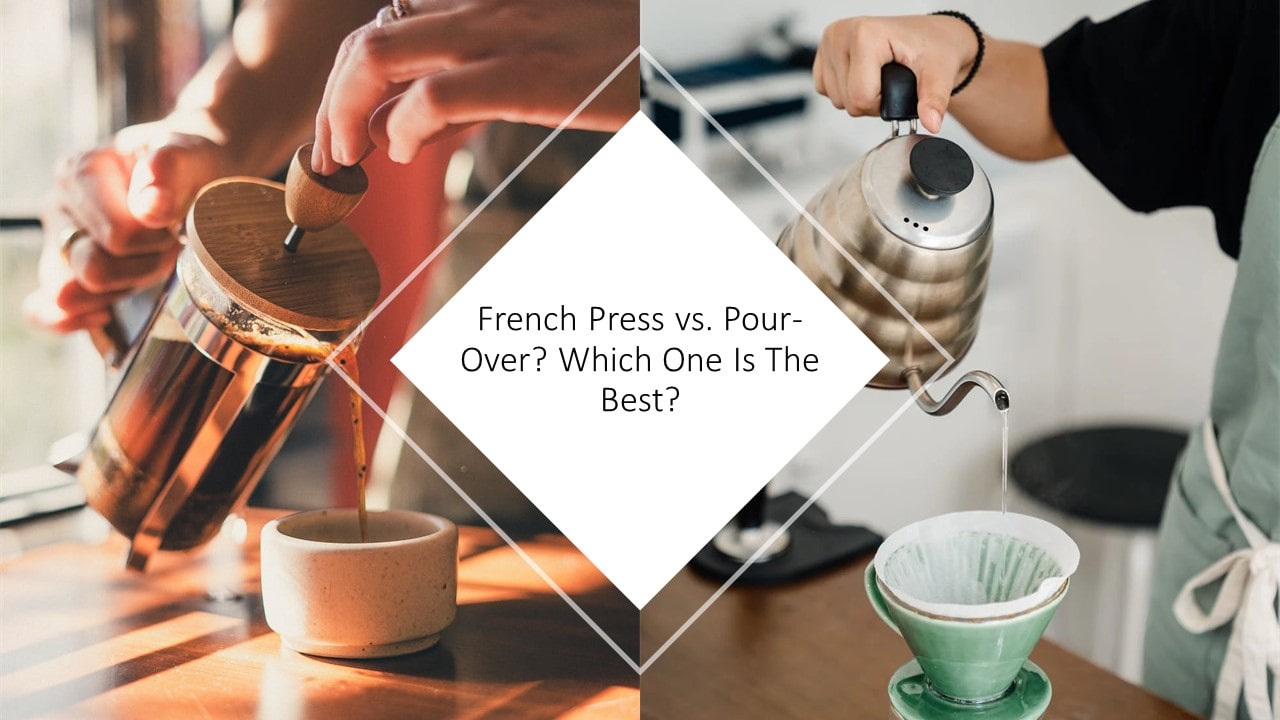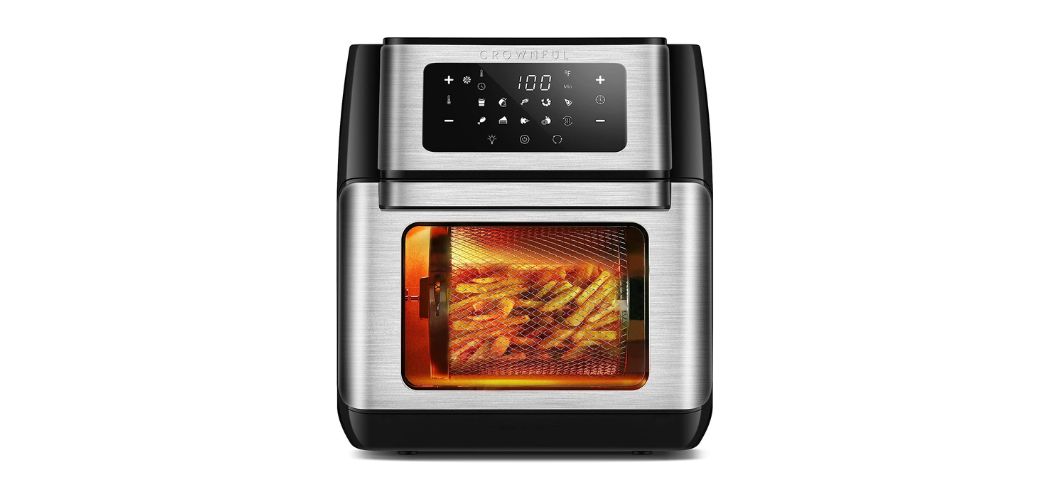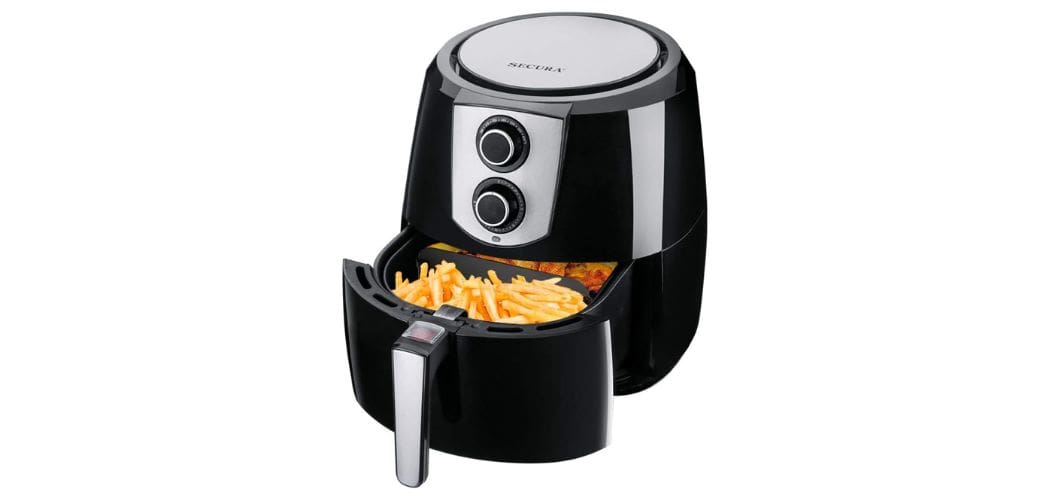You can brew a tasteful cup of coffee in a variety of ways. Indeed, there are more household brewing devices than ever before. It is due to the popularity of home brewing over the last decade.
The two most common coffee devices used today are the French press and a simple pour-over setup. You may find these two coffee makers in most homes, from stressed college kids to well-adjusted adults.
But what difference do these two devices make? Do their coffees taste different? If you aim to improve your coffee experience, keep reading to find out which coffee-making method would suit you the best.
Table of Contents
What Is A French Press?
Coffee lovers all over the globe have been using a French Press for almost a century, long before they became cool.
How to prepare this coffee? Put coffee grinds in a pitcher, add hot water, and let it soak.
And finally, pressing down the lever to extract the prepared coffee for consumption is ideal for preparing this coffee.
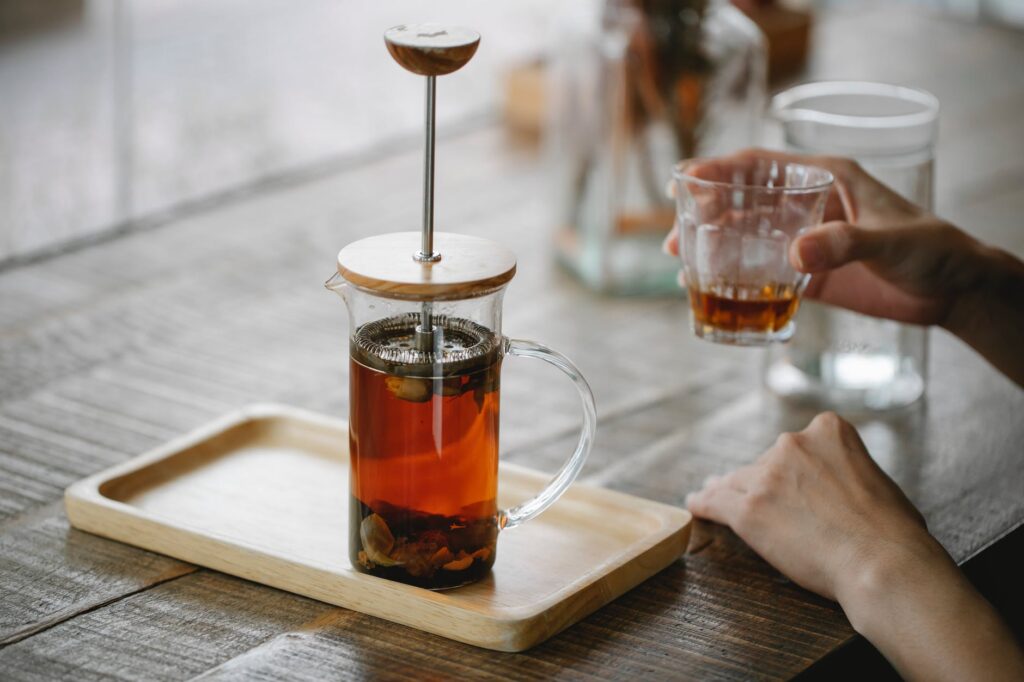
It results in a drink that is both pleasing and rich taste-wise. Since the water stays in touch with the particles from start to finish, the consistency and taste of French press brew in the mouth differ significantly from pour-over coffee.
The quantity of oils extracted from the coffee while brewing is more noticeable with a French press, which is why this technique is so popular among people who want a robust brew.
Benefits:
The following are the primary benefits of brewing using a French Press:
- It’s cost-effective, considering French Press isn’t very costly.
- It produces an exceptionally delicious coffee cup.
- Because the filter does not block the antioxidant-rich bean oils from reaching your mug, you receive a healthful cup of coffee.
- There’s no need to waste coffee filters.
- This preparation technique is suitable for people of all skill levels, including novices.
- You get to manage your brew and can experiment with different settings (coffee type, coarseness, etc.).
- You can use it to make cold brews.
- It comes in various sizes and can brew anything from a small serving to four cups at a time.
If you are looking for some of the best French Press on the market then make sure to read our full review. You would find it useful in helping you to select a French Press that suits your needs.
Harms:
Coffee consumers’ main gripe is the prevalence of grit, but there’s also the matter of clean-up. The mesh element of the appliance, although essential, may be challenging to keep clean.
You may reduce this by immediately washing your carafe after pouring your coffee. Allow it to sit in the residual grinds for no longer than is required.
What Is A Pour-Over?
Pouring warm water through coffee grounds is likewise required in the pour-over technique.
However, the grounds are placed in a cone-shaped container. At the summit of the cone, the grinds are kept.
The coffee grind is then sprayed with water and left to rest for a few moments before being resprayed.
The filter directs the additional water clockwise through the grounds, eliminating the aspect of consistent contact.
It results in a lighter, more delicate brew with no grit, irrespective of the chosen product.
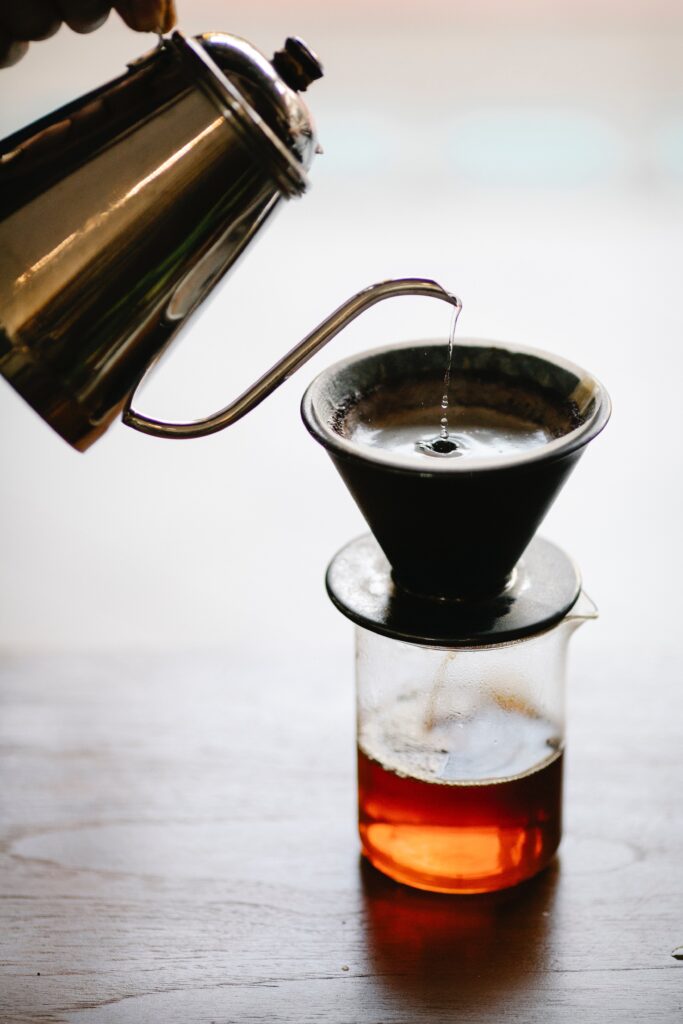
Benefits:
Here are the advantages of having a pour-over procedure:
- If you want to prepare a cup or two of java each day, a pour-over device is ideal.
- Pour-over coffee has a smoother texture and a less bitter taste than French press coffee.
- Since the resultant brew does not sit on the grinds, it is grit-free.
- If your grinding size is too little or your press pot’s screening strainer isn’t practical, your French press coffee will get grainy.
- A pour-over coffee machine is more straightforward to clean than a French press, which requires dismantling.
Harms:
Pour-over coffee has two significant drawbacks. To begin with, disposable filters might be cumbersome. While the price is not prohibitive, it does necessitate having them on hand whenever you want a coffee.
Paper filters also produce more trash and have a more significant environmental effect than a washable fine mesh sieve like the one used in a French press.
Pour-over also gives you no control over how long the grounds remain in contact with the water, which might result in a poor brew if you aren’t cautious.
What’s The Difference Between French Press And Pour-Over?
Design:
The French press was invented in Italy in 1929. However, France created previous versions, hence the name. They are easily available in many sizes, styles, and components. But they mostly come in glass and have a stainless steel filter coupled to a firm plastic plunger cap.
You can use the lid to drive the grounds of the press as it blooms. If you’re entertaining family members or have a massive family of coffee lovers, French Press is the way to go.
Though cloth-filtered pour-overs have been around for millennia, Melitta Bentz of Germany was the first to design the contemporary, paper-filtered variant in 1908.
The pour-over brewing technique has a rich history. It is a simple brewing method that has seen a resurgence in recent years as automated coffee machines have fallen out of favour.
Hot water can fall over coffee grounds in a cloth or disposable filter, boiling and emptying into the cup via a bottom hole of the pour-over brewer, which rests atop a drinking glass.
Brewing:
The French Press also referred to as an immersion coffee maker extracts the taste of the coffee beans by letting the coffee grinds soak in hot water while it brews for a few minutes.
It produces robust, creamy coffees with many flavours due to the extended, close interaction.
Pour-over is an infusion brewer, which means that instead of immersing the coffee shreds in hot water, you recover pour-over coffee by slowly running hot water over them.
Also known as hand drip, it is almost equivalent to a drip coffee maker but without the use of one.
The brief contact duration between the coffee beans and the water during the brewing process results in a somewhat sour cup that is far less flavorful than a French press coffee.
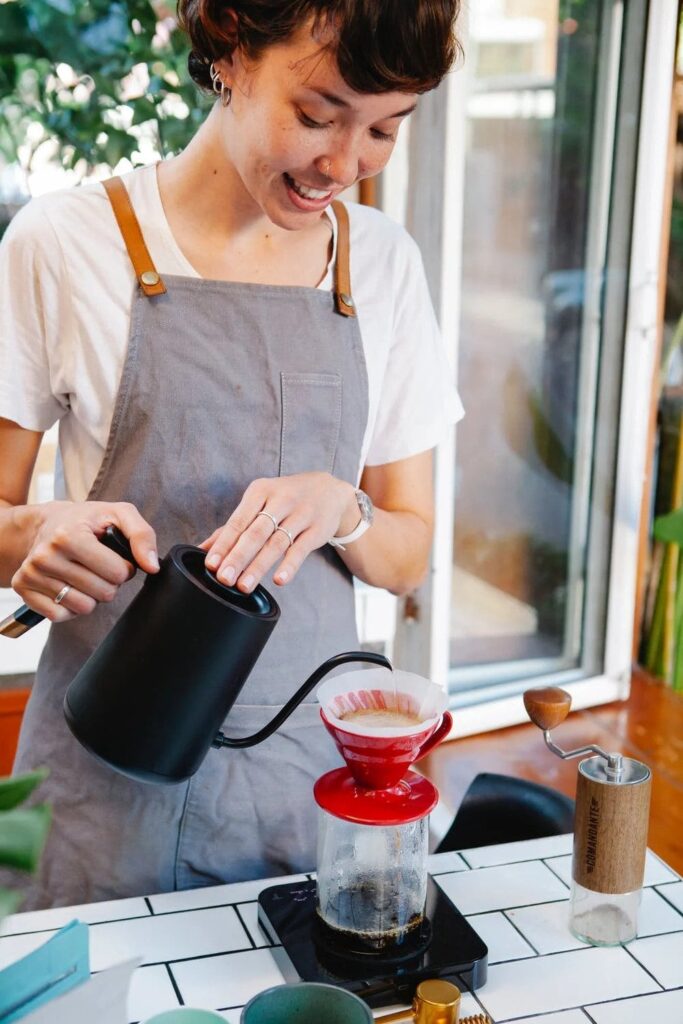
The paper screens also keep more of the coffee’s natural ingredients out of your cup, resulting in a very pure, thin cup.
Time:
From start to finish, the French press requires around 5 minutes. With the 4-minute brew time and the heating procedure, it’s one of the simplest, quickest, and most basic coffee brewing processes.
The gap between the French press and pour-over brewing processes is scarcely visible. Using a brief warmup of the filter and a 3-minute brewing period, making a cup of coffee with a pour-over coffee machine should take roughly 4 minutes overall.
Usage:
Even the most unskilled baristas will have difficulty messing up a French Press coffee. There are several techniques to perfect the procedure, but utilising a French press is easy to understand. It sums up in two words: push down.
However, using the incorrect configuration for coffee grinds, soaking the coffee for too long or too brief of a period, and pushing the plunger at the incorrect moment matters.
Among the main advantages of this method is that it dependably produces superb coffee after the individual learns a few fundamental essentials.
The pour-over technique is more convenient, but it needs more fiddling and experience. You pour then allow the coffee to brew in a French press but preparing a cup of pour-over works if you add the water in a specified direction while paying close attention to the time.
Though it’s an easy enough procedure to learn, novice users will have a higher training curve as they know and understand the brew system.
Brew Control:
French Press also has some disadvantages: although the brewing procedure is simple, it doesn’t provide a lot of control over the coffee brew.
The mesh filter forces the sediment and muck out of your coffee, and using coarsely ground coffee beans will help you obtain a more consistent brew.
A powerful, bold, rich coffee essence will always be present in a French press cup.
If you leave the device to brew for shorter periods, you’ll get a soft cup, but it’ll still include sediment and oil.
Pour-over coffee has greater brewing flexibility than the French press since you manage the water straight with your pouring method.
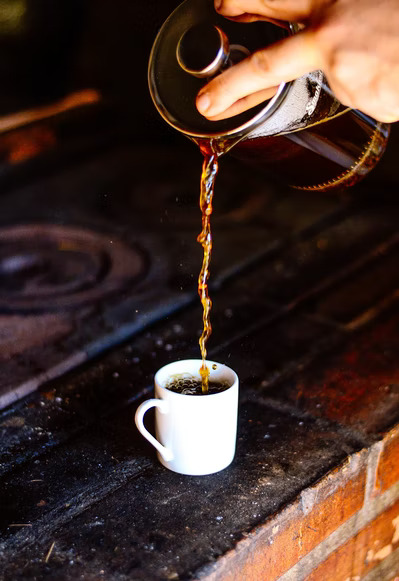
Taste:
Is it true that coffee from a French press tastes better? It depends on you. Everyone is adamant about their preferred brewing technique, and no one can agree on which tastes create the ideal cup of coffee.
Whatever your taste for flavour, one thing is sure: these two coffee machines produce extremely distinct-tasting cups. It caters to everyone!
It’s wrong to call French press coffee full-bodied. A French press cup has a dark, foggy appearance and contains substantial rich coffee oils. A French press cup provides the ideal jab in the teeth to get your day started correctly.
But it has one drawback: it may get sludgy, leaving the sediment in the final few slurps of your cup. People either love or despise French press coffee because it is bitter and has a hefty mouthfeel.
What about pour-over? These days, you can’t go into a coffee shop without seeing several pour-over coffee machines in action.
The taste of the pour-over, which is unlike that of the French press, is the reason behind its popularity. The pour-over brewing process is light and refined, which is very useful for highlighting the subtleties of a bean’s taste, enabling even light shades to shine.
Typically, this indicates that the majority of pour-over comes out black. However, this isn’t always the case. People who like French press coffee are unlikely to enjoy pour-over coffee since the flavour is considerably softer.
Quick Comparison Guide:
| Aspects | French Press | Pour-Over |
| Design | It comes in glass and has a stainless steel filter coupled to a firm plastic plunger cap. The lid drives the grounds of the press as it blooms | Minimalistic design looks like a cup with a handle |
| Brewing | It extracts the taste of the coffee beans by letting the coffee grinds soak directly in hot water while it brews for a few minutes | Instead of immersing the coffee shreds in hot water, you recover pour-over coffee by slowly running hot water over them |
| Time | Requires more time to prepare | Needs less time for coffee to come out |
| Usage | Easy to use | Difficult to operate |
| Brew control | Even though there is little control, you have command over the coffee grind and flavour | More brew control |
| Taste | Has a bold rough taste and granular at the end | Has a smoother texture and pleasant taste |
FAQs
How To Minimise Grit In French Press?
You must use a fine grind that resembles coarse sea salt inconsistency. A mesh strainer cannot handle pieces of this size.
Does The French Press Have More Flavour?
The natural compounds in coffee come out from French presses, giving you an authentic flavour of your coffee mix. The coffee’s natural oils release during the 4-5 minute soaking procedure, resulting in more taste.
Is It Easy To Clean The Pour-Over Machine?
Clean-up is a breeze with Pour-Over supplies. Wash out the pitcher after removing the used cloth filter with the grinds. The roughness that appears with a French press is likewise eliminated with a pour-over.
What’s The Verdict?
Whether you go for a French press or a pour-over coffee machine depends on your habits and taste choices. A French Press is best for those who love robust, rich, and powerful coffee and a thicker consistency.
The pour-over technique is excellent for coffee enthusiasts who like a more delicate taste. If you don’t need to brew too much at once, can’t stomach grainy coffee, or want a coffee machine that cleans up quickly, pour-over is ideal.
Given the low cost of both kinds of coffee makers, you can try both and decide what you prefer!

